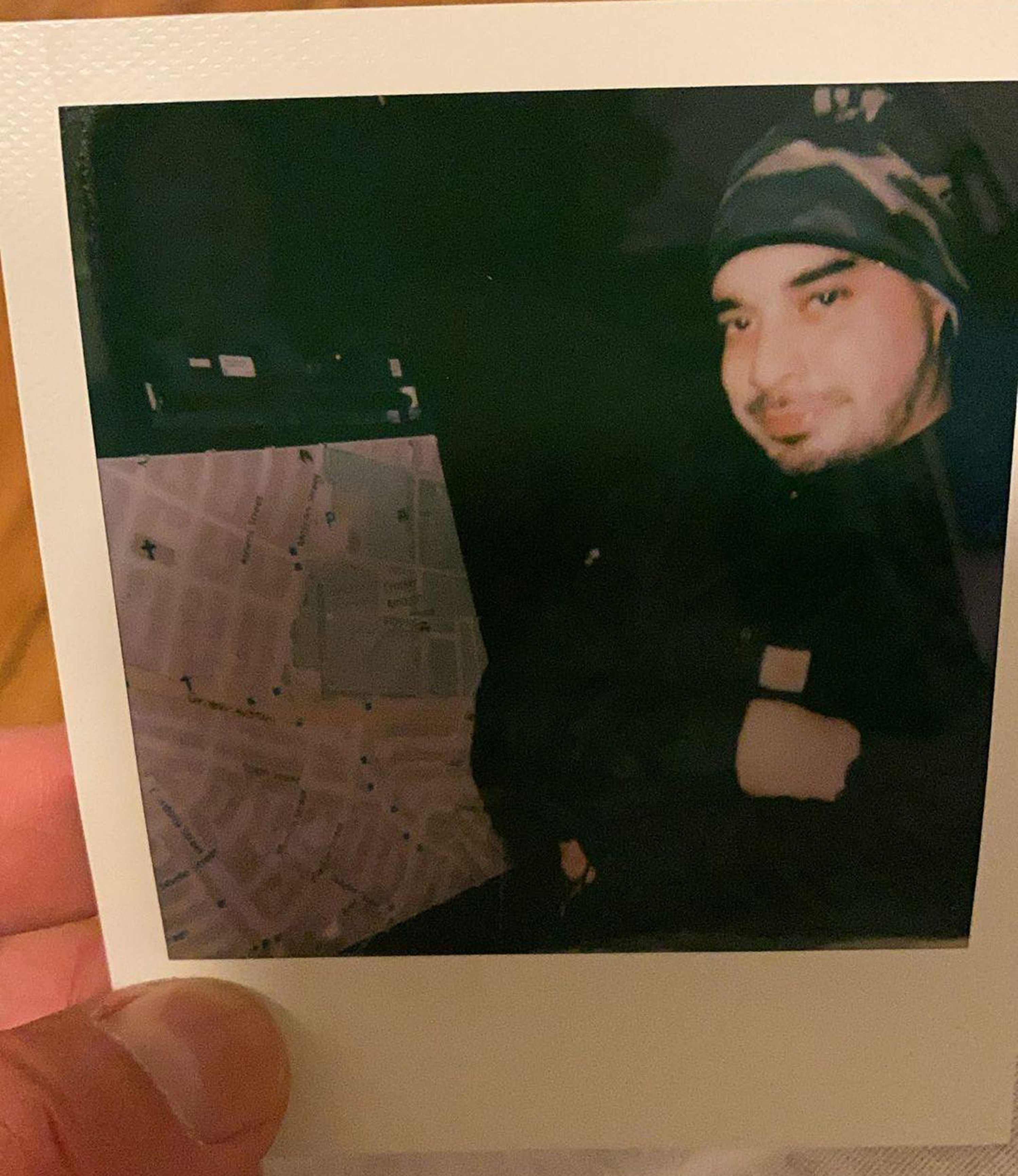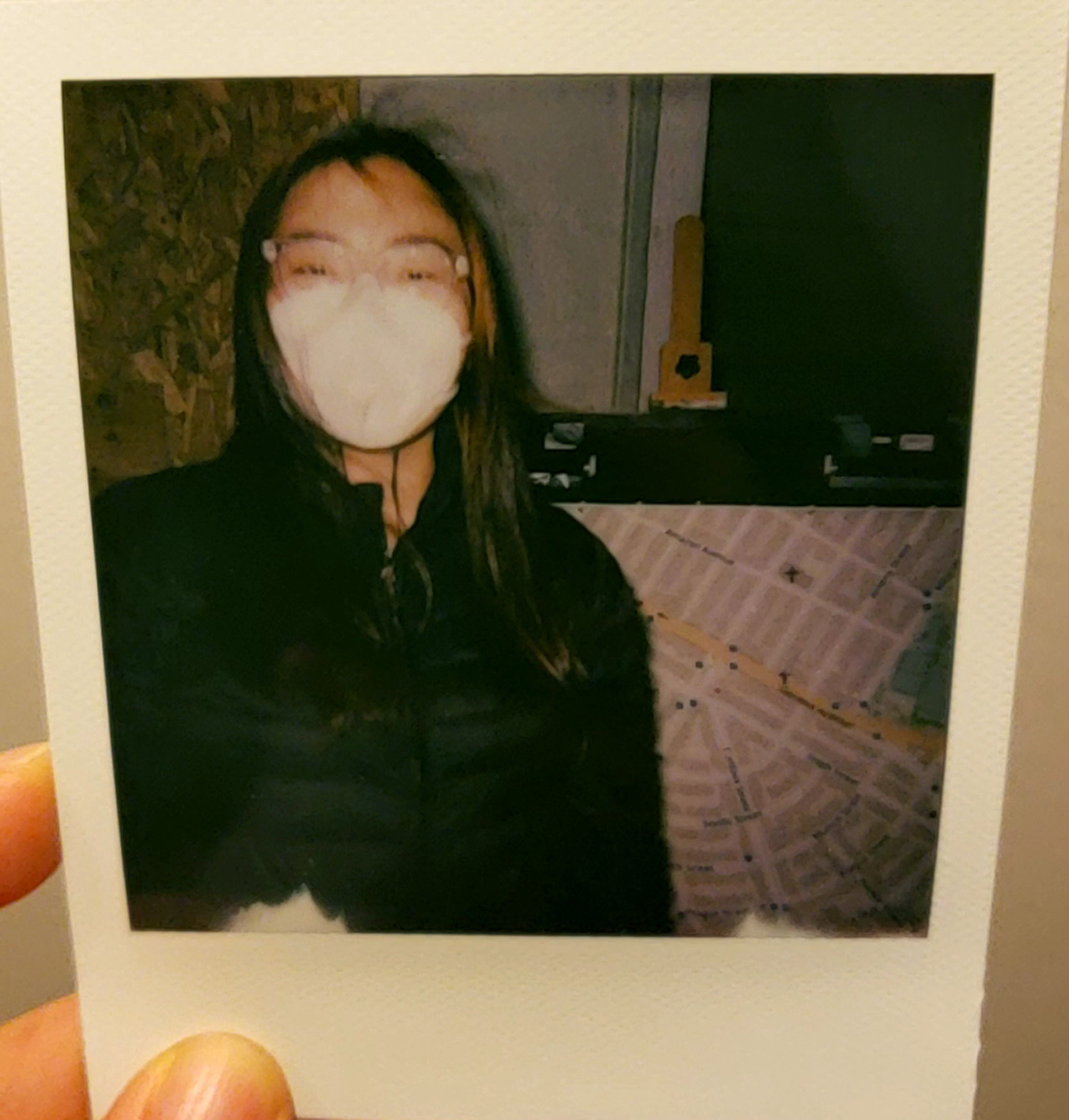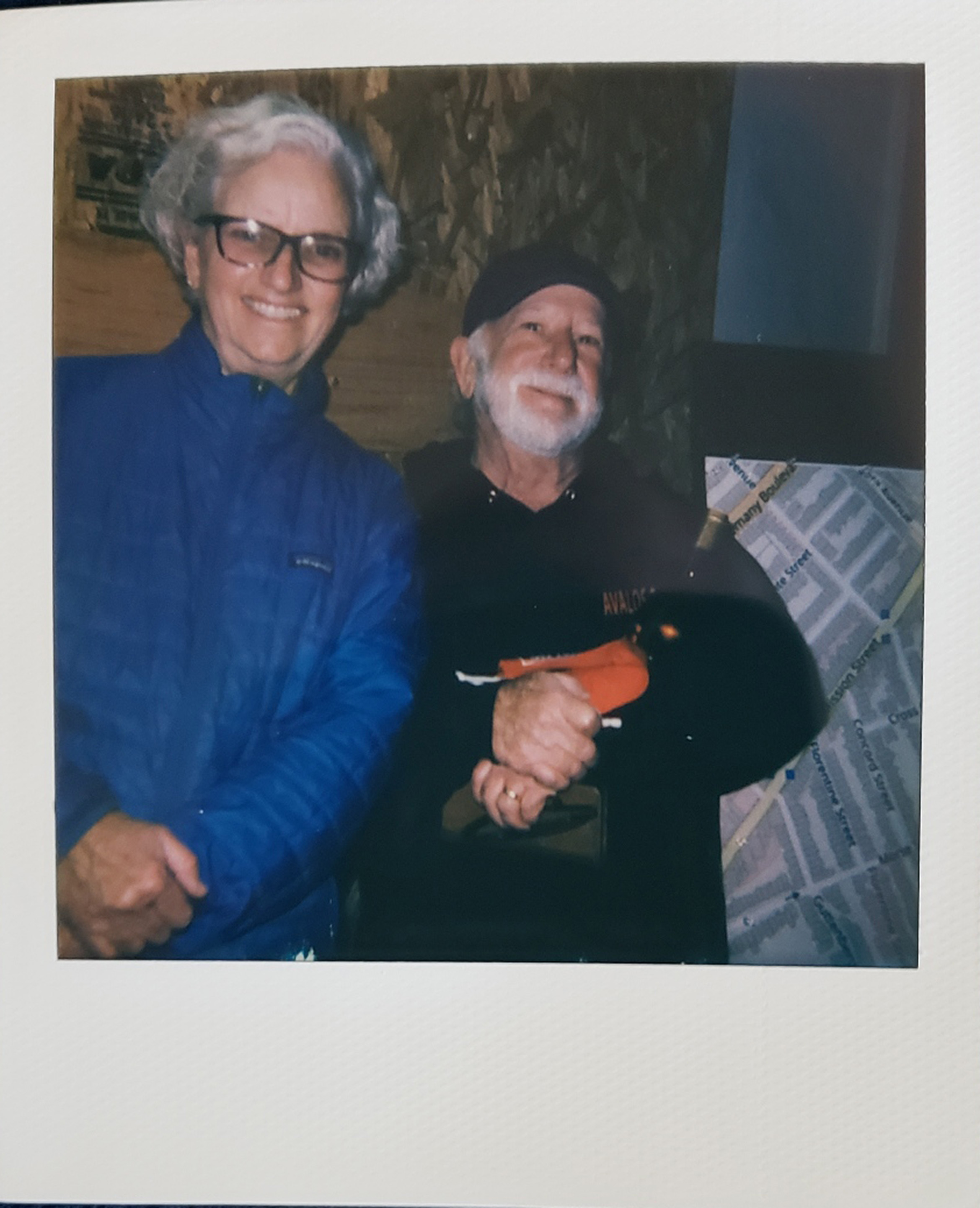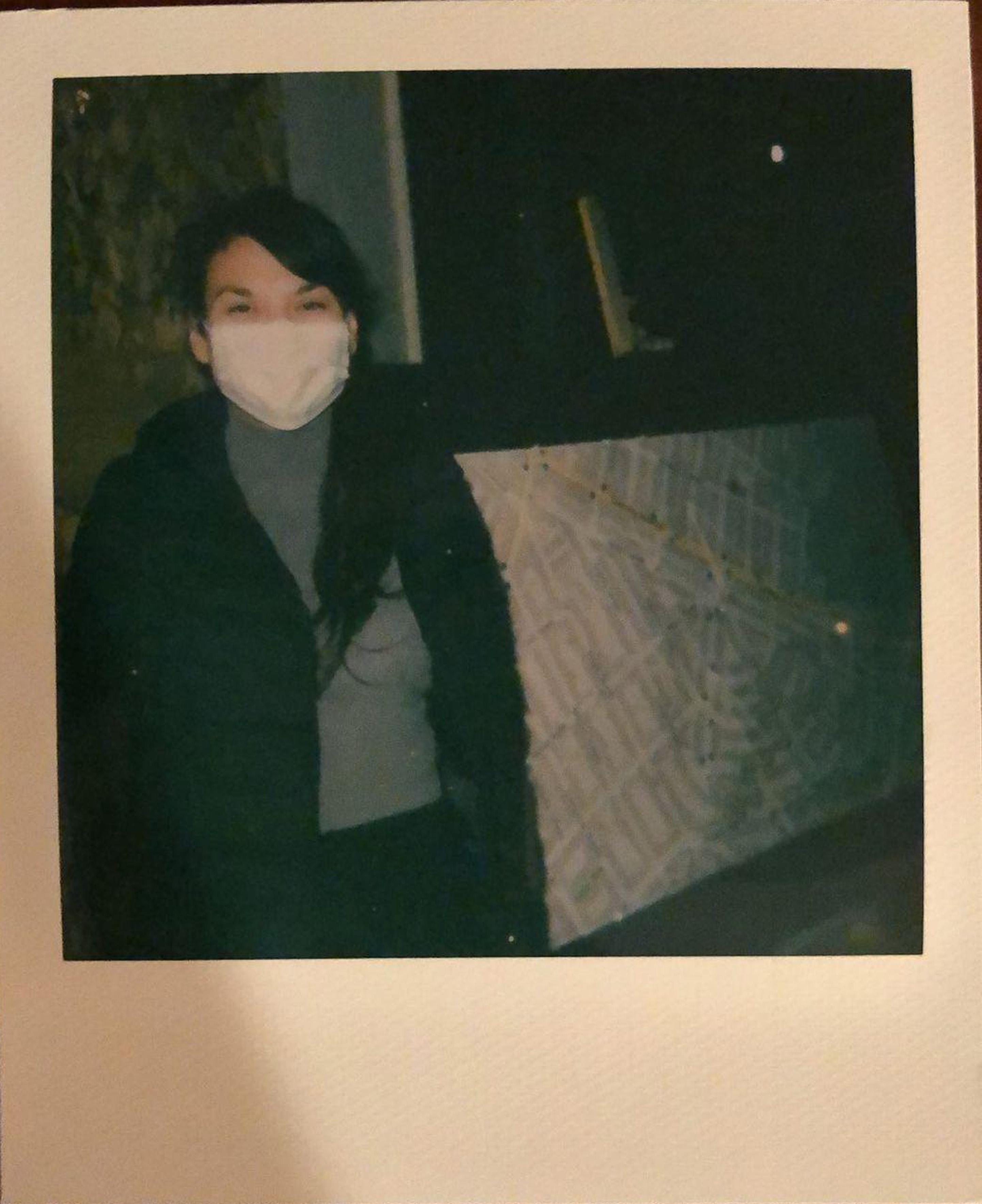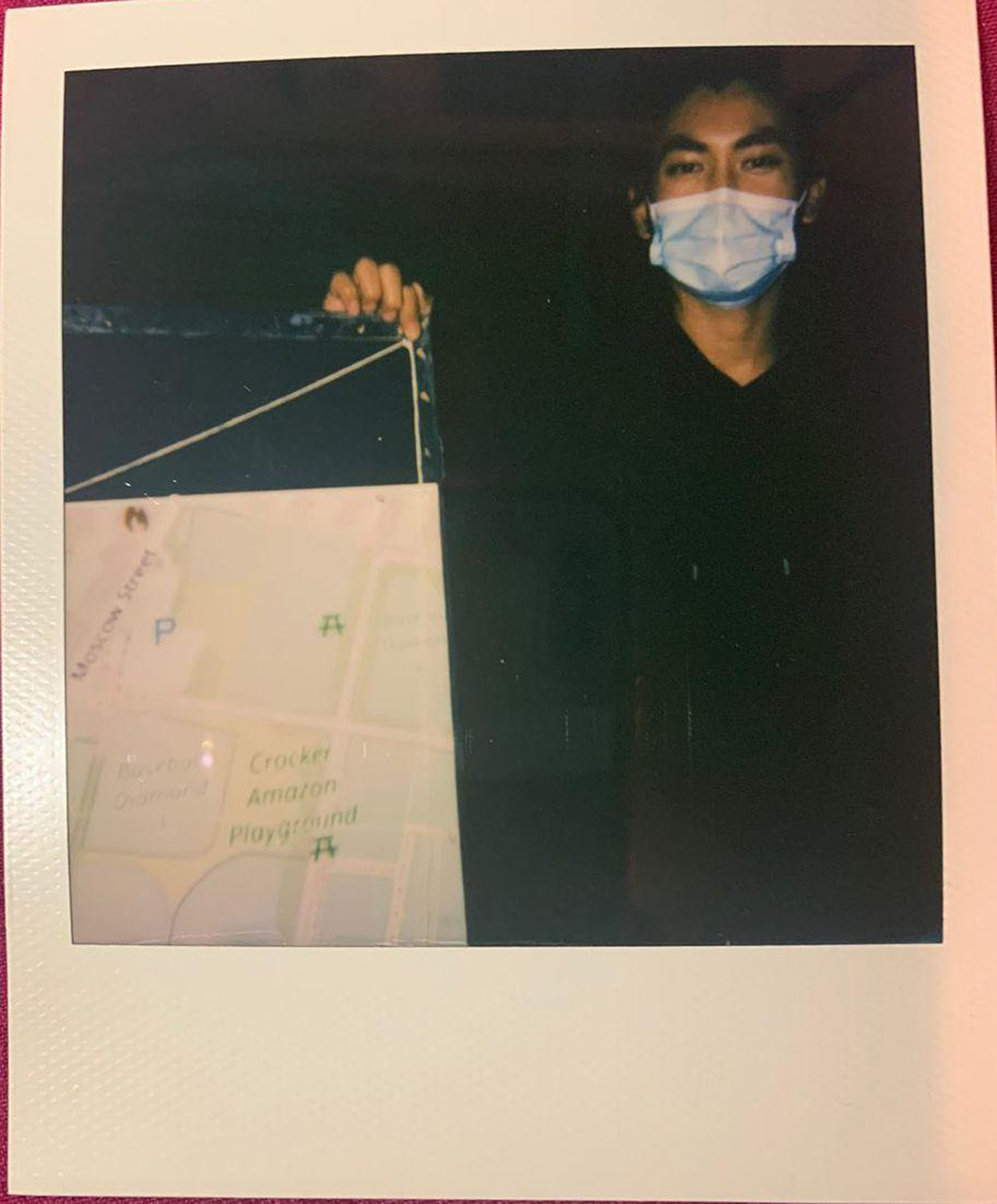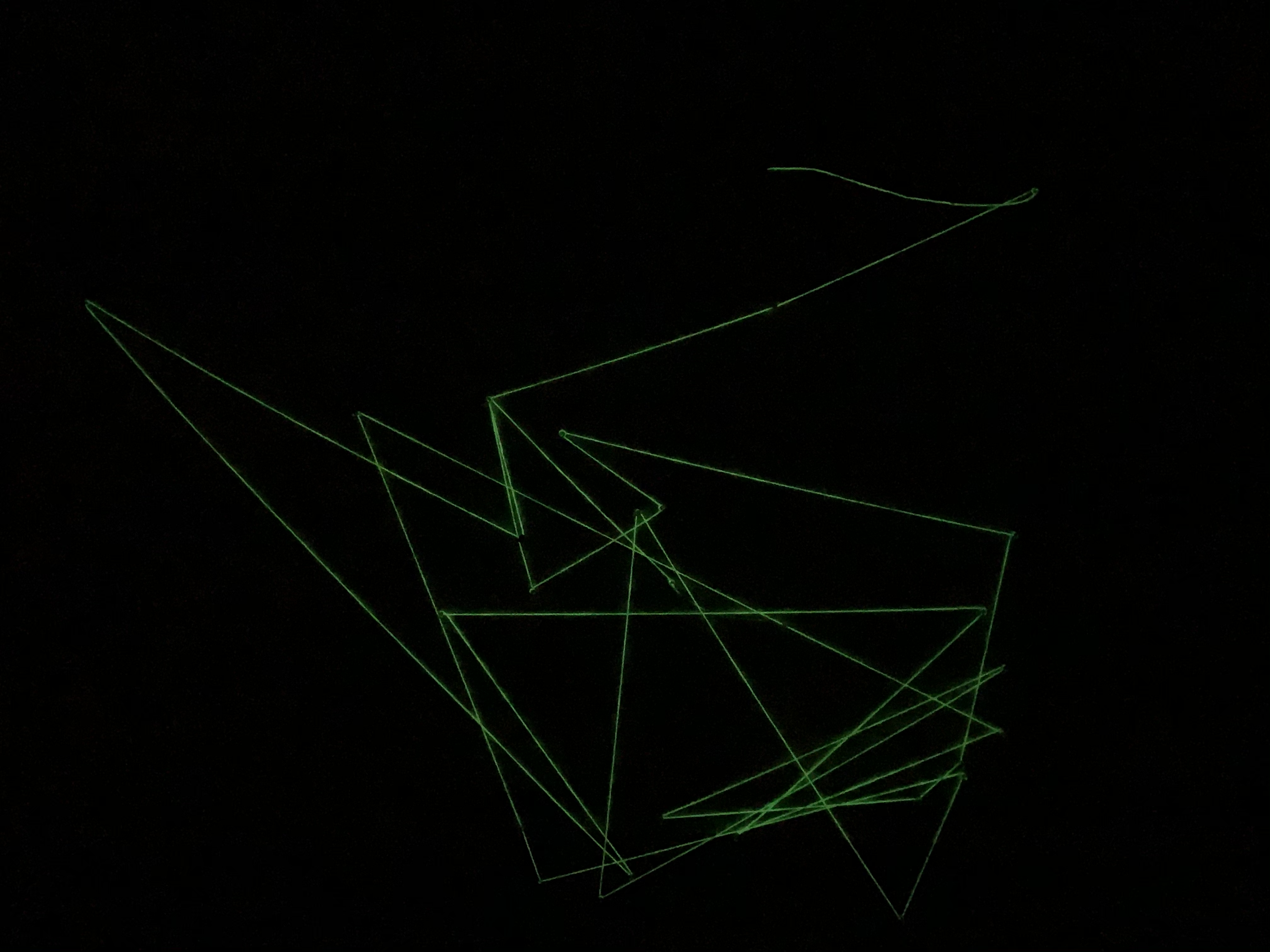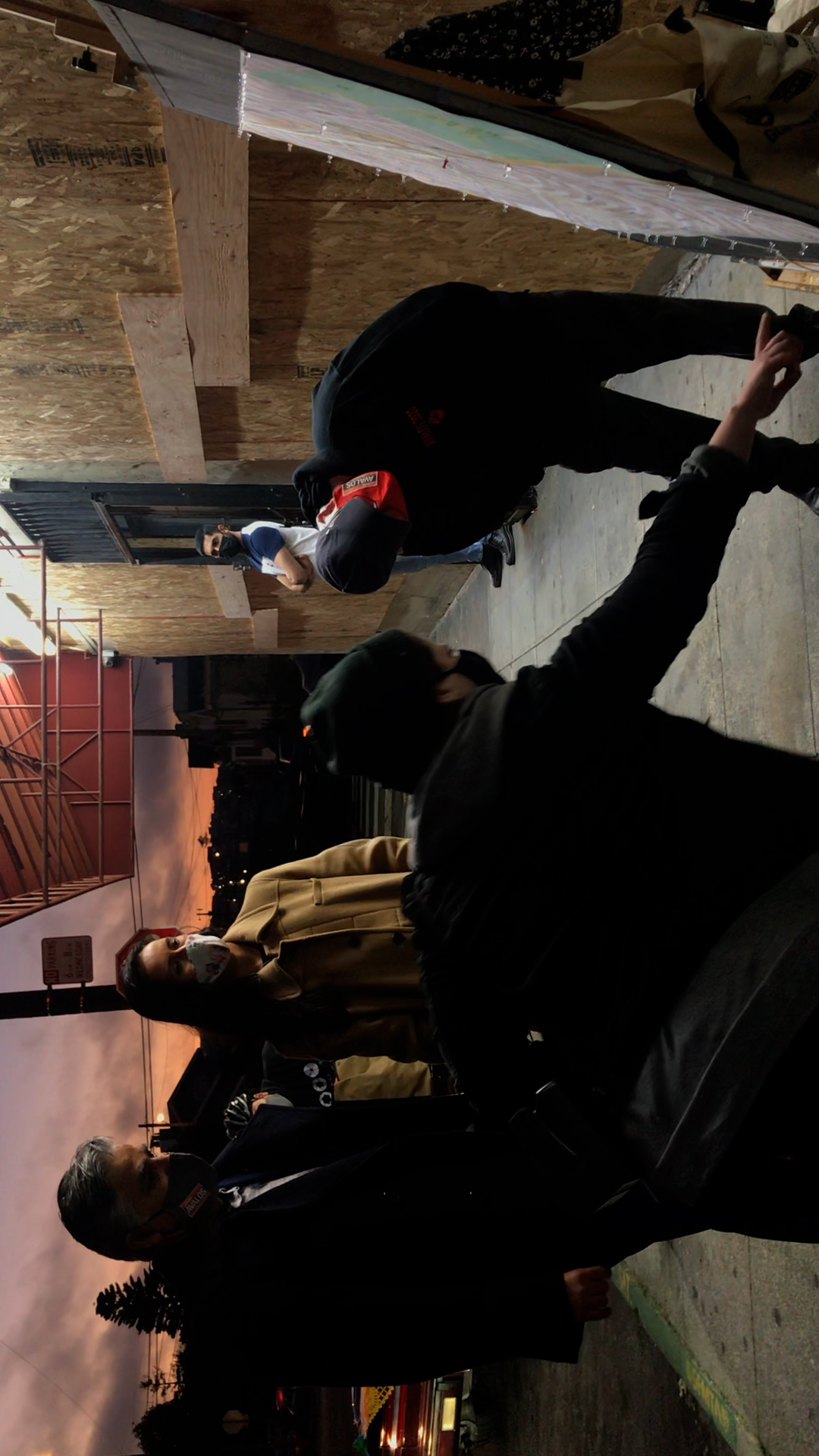
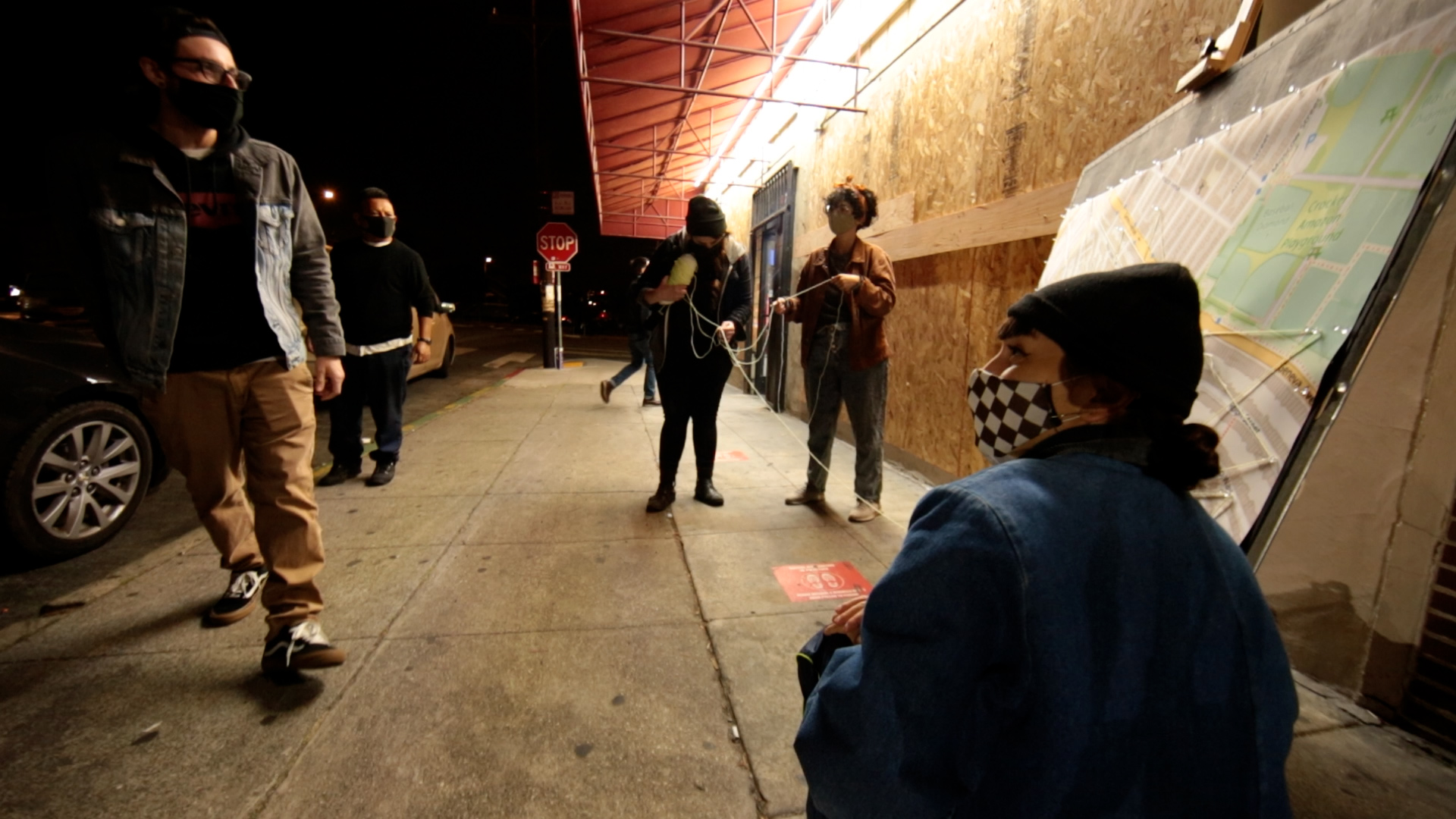
The days are getting darker and the nights a bit colder. It's Election Day and folks in the neighborhood have just cast their vote, unsure what’s to become of this country in these fraught times. Anxiety is high as the world waits for the results. Will there be more riots or a civil war?
Before reaching the safety of their homes, Excelsior and Crocker Amazon neighborhood residents stop by Cordova Market. The market’s windows are boarded up. Nabin is at the register and rings up a 6 pack, Doritos, and toilet paper. A customer on their way out is curious about the faint lines that take the shape of a spider web and large board on an easel alongside the market. They come closer to see 2 community artists placing a push pin into a large neighborhood map, marking where each customer this evening lives or has travelled from to get to the market. The lines are one continuous thread of glow-in-the-dark yarn weaving together neighbors' homes and Cordova Market in a community web.
The ritual of publically mapping one's proximity to a local market is related to sustenance, social connection/interaction and support networks during a time of extreme isolation and disconnection due to COVID-19. Current spatial and social limitations force us to ponder what and who is essential for human life. Neighborhood food markets provide access to essential supplies in emergency situations and thus provide safety and help cultivate a culture of care--or a politics of care. This web of connection and care is often invisible. Cordova Market provides a physical intersection for these encounters of reciprocity and exchange.
This ritual action of tracing connections through physical location and proximity creates a glow-in-the-dark community web. Aiming to captivate the attention of neighbors in the Excelsior and Crocker Amazon district of San Francisco, it is the first step in a larger project of building relationships between food sovereignty advocates, artists, community organizers and neighborhood residents. Cordova Web reveals our local interdependence as we imagine new ways to weave together food, space, and community engagement in a politics of care.
This project is a collaboration between artists Rossie and Lisa Roach, neighbors and residents of the Excelsior District. We extend our gratitude to Diana Garcia de León for their support in documenting this project, Susanne Cockrell and my classmates at California College of the Arts for their feedback and insight throughout the development of this project.


